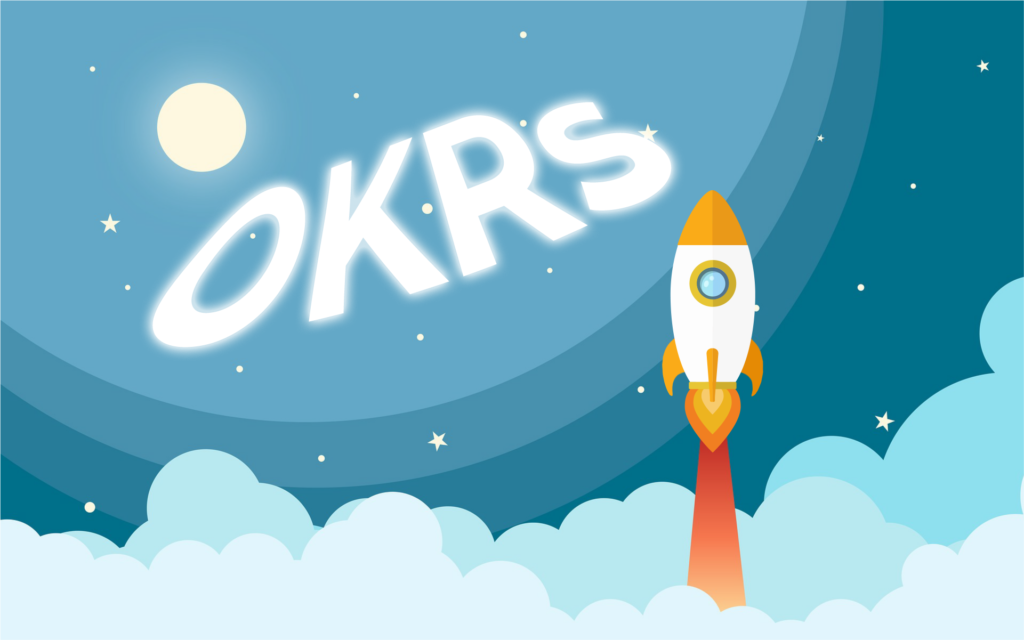If you’ve ever wondered why work projects are often behind schedule or your employees keep losing interest, it could be that they don’t have clear objectives to offer them direction.
The truth is many organizations don’t understand the necessity of goal-setting, which causes them to fall short in various areas. What these companies fail to understand is that goal-setting can help outline a clear direction they should follow. It will also allow them to determine if or not they’re making progress towards realizing the vision of the company.
One goal-setting method that is common among big companies is the OKR method. This company will show you how to use OKRs effectively.
What Is OKR?

OKR stands for Objectives and Key Results. It is a framework that organizations have used for decades to set objectives and outline the key results for measuring the progress made towards realizing those goals.
Consider OKRs as an agile and collaborative approach that supports making the objectives of an organization transparent to employees. Whether applied at the management level or junior level, an OKR framework aims to align their different functions to achieve a common goal.
What Comprises an OKR Framework
As highlighted above, an OKR framework is made up of several objectives and key results. Objectives are desired goals for an organization. It outlines the directions for each employee to follow if they are going to contribute to the overall success of the organization.
Objectives can be deemed to be the ultimate destination given a period of time. They have to be clear, inspirational, achievable, and highly ambitious.
The key results, on the other hand, are the metrics used to measure the progress of the objectives and determine if they have been achieved. As such, the key results should be measurable and formulated concretely for easy evaluation.
Take, for example, an eCommerce business. One of their objectives would be to ‘Create an amazing and interactive online customer experience’.
This business has a great objective, but how will it know if the user experience is amazing for the customer. Keep in mind that without measurement, there is no objective This is where the key results come in.
Analyzing the customer journey from when they sign in to their websites to when they make their purchases can be a good option.
As such, a sustainable OKR would be ‘Create an amazing and interactive online customer experience where the customer takes less than 60 seconds to complete their purchase order.’
Why Companies Should Use OKRs

Companies usually set high goals to be achieved within a particular time frame. However, they’re often forgotten within a month, causing everyone to neglect them altogether.
This creates a passive-management work environment which makes it hard for department heads to track and measure the goal-achievement progress for their employees. They’re unable to understand which employees are overachieving, underachieving, or achieving anything at all in the first place.
When the work of employees cannot be aligned with the goals of the company, they feel disconnected which can compromise their productivity. A work environment of this nature will make it hard for management to build a healthy and measurable business model.
A lot of companies try to communicate their goals via email or through a Microsoft PowerPoint presentation. Unfortunately, this is a static process that makes it hard for businesses to track progress since organization goals aren’t visible in real-time.
To combat this situation, companies such as Amazon, Netflix, Intel, and Google have adopted the OKR goal-setting technique. Here are some of the benefits you can expect from using OKRs.
1. Bring Focus to the Company
This is perhaps the most important benefit of using an OKR system. OKRs are not intended for a company’s usual operations since they are not in a way an alternative approach to managing business activities.
Instead, their main purpose is to improve the organization by outlining areas of improvement. OKRs provide companies with insight into what needs looking into so executives can brainstorm ideas for doing things differently.
A good way to start is by making the direction of the entire company clear to all employees so that they can deliver the results that will add value to the business. The most successful OKRs are set quarterly (every 3 months). This allows them 4 chances a year to review their objectives and key results so they can respond accordingly in an ever-changing world.
2. Aligning Employees with Company Goals

Once the focus has been set for the company, real work can begin through connecting employee goals and activities to the organization’s strategic mission.
The top management executives will collaborate with various departments to set organization-wide OKRs. Based on the set OKRs, each department will proceed to set its own OKRs to help the company realize its overall objectives.
Based on the department objectives, each person will set their own goals and targets to make sure that every employee is working to achieve a common goal.
3. OKRs Are Flexible
OKR frameworks use short goal cycles, unlike traditional long-term company strategies. This gives teams and employees the flexibility to adjust and reshape their strategies according to changes in the industry.
While tactical OKRs are set for every 3 months, strategic OKRs are set for a year. At the end of each cycle, every employee analyzes the results achieved and if need be, adjusts their strategic OKRs.
For smaller organizations, adopting an even shorter OKR cycle such as 6 or 8 weeks might be better for the business.
4. Promote Transparency and Accountability

Ideas are like pieces of a puzzle. They need to interlink to produce a bigger, alluring result. For ideas to connect, there has to be accountability and transparency.
You’ll find that top management are often aware of about 5% of the company problems. For a company to adopt an effective OKR system, at least 70% of the objectives should be set by employees and not their managers or supervisors.
This approach makes everyone accountable for their objectives and as such, will be more responsible and motivated to achieve them.
To Sum It up
OKRs can help organizations of varying sizes improve their productivity given the benefits highlighted above. Companies such as Adobe and Google have used OKR frameworks and have achieved phenomenal success while at it.
It really is a powerful way of setting and assessing the mission and vision of any company as well as making clear where its priorities lie.







